MARIANI’S
Virtual Gourmet
NOVEMBER
17, 2019
NEWSLETTER
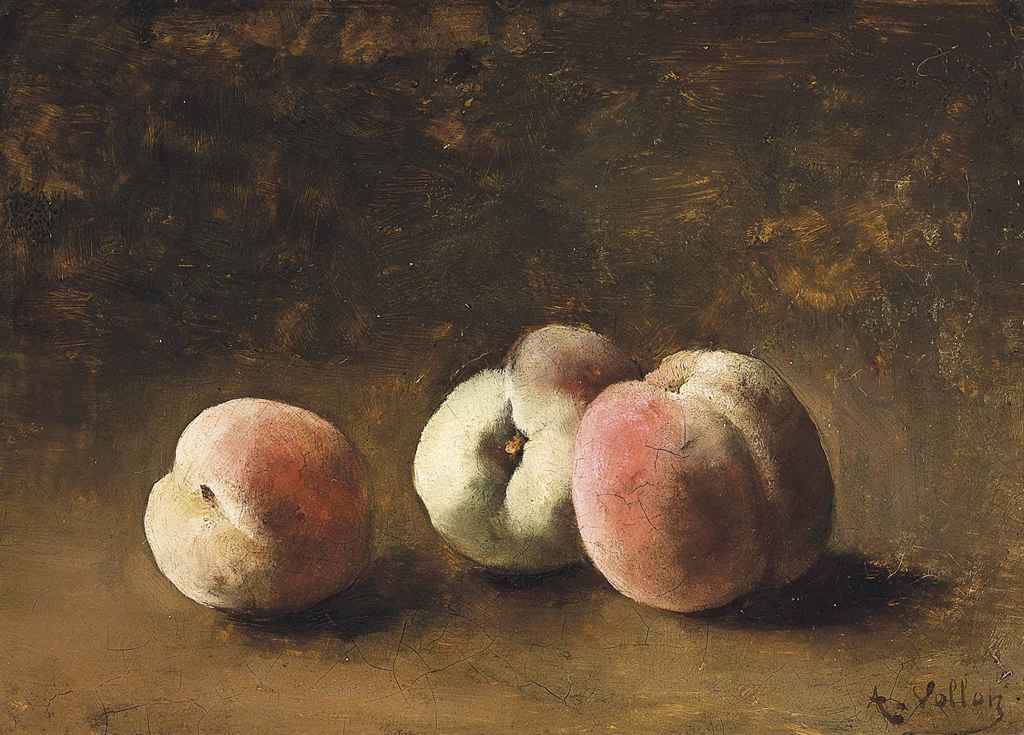
❖❖❖
IN THIS ISSUE
THREE NEW PARIS HOTELS
By John Mariani
NEW YORK CORNER
PATSY'S CELEBRATES ITS 75TH ANNIVERSARY
By John Mariani
NOTES FROM THE WINE CELLAR
FROM RACE TRACK TO ADOBE ROAD,
KEVIN BUCKLER IS A BIG WINNER
By John Mariani
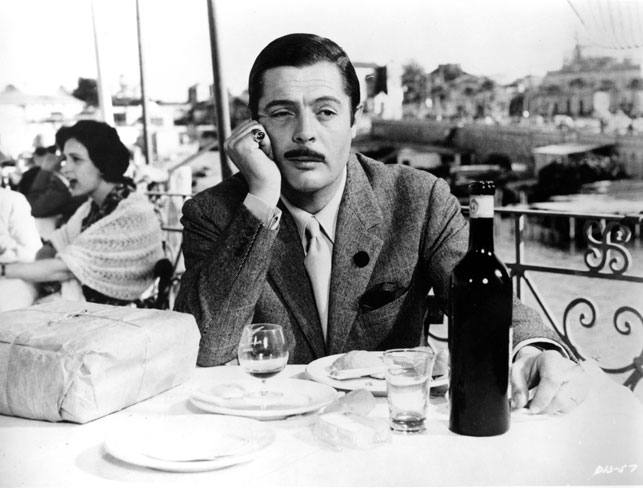
ANNOUNCEMENT: There will be no issue of Mariani's Virtual Gourmet because I will be dining and drinking my way around Sicily for a week. Arriverderci!
❖❖❖
THREE NEW PARIS HOTELS
By John Mariani
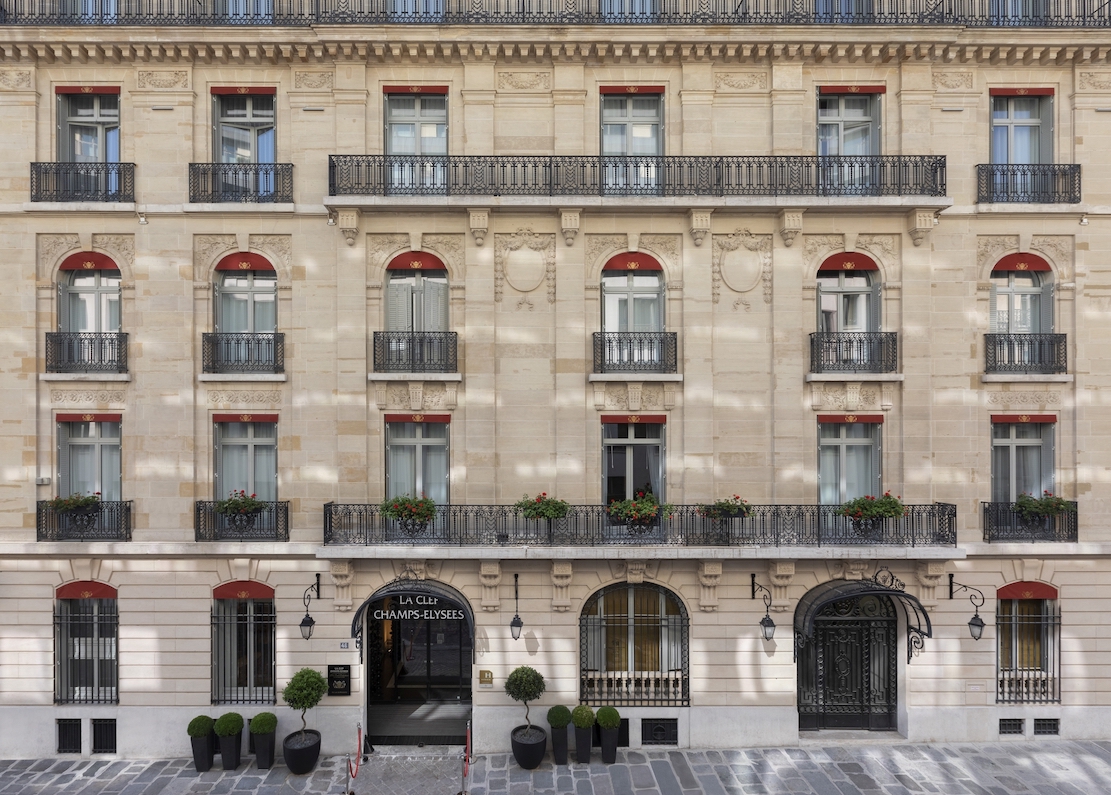
La Clef Champs-Élysées
The patina of age that once affected the grand old hotels of Paris has, over the past decade, been scrubbed clean by new owners, largely Arab sheiks, who own the Plaza-Athenée, the Maurice, the Ritz, the Four Seasons Georges V and the Crillon, after lengthy closures that brought them into the 21st century with all modern amenities. These restorations have forced all other hotels, some old, some new, at and below the five-star ranking, to bring up their level of décor, cuisine and service. Here are three I recently stayed at that epitomized what is going on in Paris right now.
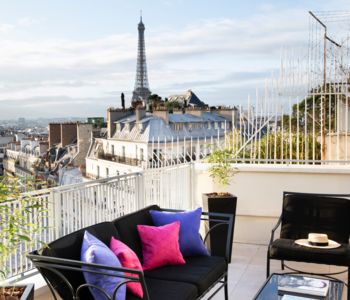 HÔTEL DE SERS
HÔTEL DE SERS
41 Avenue Pierre 1er de Serbie
+33 1 53 23 75 75
Noël
Coward once said, “Ninety percent of
romance depends on good lighting,” and for that, Hôtel de
Sers is a very
romantic place indeed. Not long ago even the most
deluxe Paris hotels rarely
had more than 50-watt light bulbs, but the City of
Light deserved more. From
the brightly colorful entry hall and lobby to the
ample rooms themselves, the
soft Parisian light bathes the interior of this 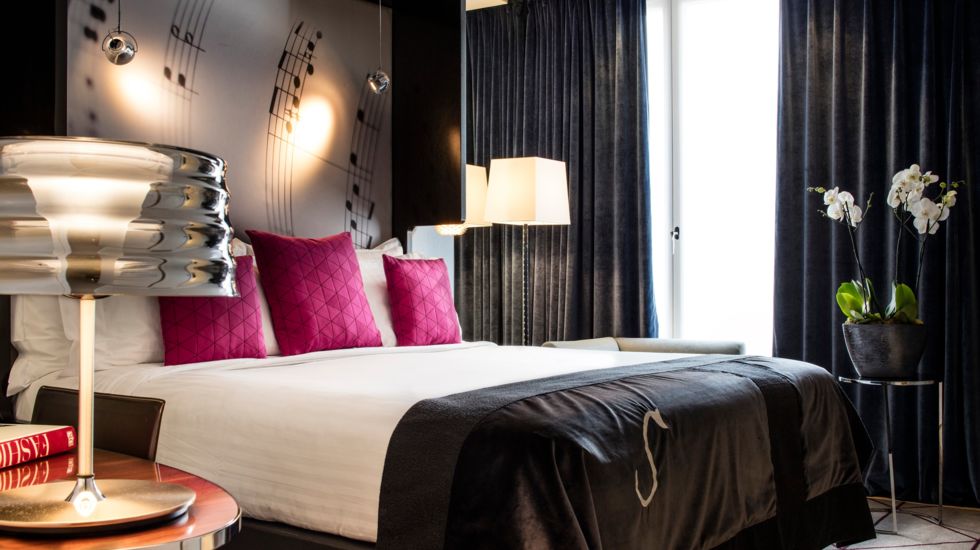 beautiful,
small hotel, built
in 1880 by the Marquis de Sers as his residence in
the Second Empire style. It
once had an entrance for horse-drawn carriages
leading directly to a courtyard
and stables.
beautiful,
small hotel, built
in 1880 by the Marquis de Sers as his residence in
the Second Empire style. It
once had an entrance for horse-drawn carriages
leading directly to a courtyard
and stables.
In 2004 it became a hotel, then in 2010 B Signature Hotels did extensive renovations, creating 45 bedrooms and seven suites in wholly contemporary décor, while the walls in the public areas retain the portraits of the Marquis’s family.
The library was expanded in 2015 and linked to the lounge, and the bar, with sofas in a metallic-effect fabric by Lelièvre, is now one of the most sophisticated in the area near the Champs-Élysée and Avenue Georges V. The pretty restaurant now has a terrace with a moveable glazed roof, so, if there is any sunshine in Paris between now and April, this is an fine place to dine.
The reception personnel are young and warmly efficient.
Right now I found a superior room for $364 on the hotel's website. All rooms are luxuriously appointed, and there is a sauna and fitness center with massage facilities. My room was done in charcoal grays, violet pillows and a motif of musical signatures on the wall. The bath was in white, with gray marble, pale pink roses and a wonderful view of the Eiffel Tower.
Rooms are available for those with reduced mobility.
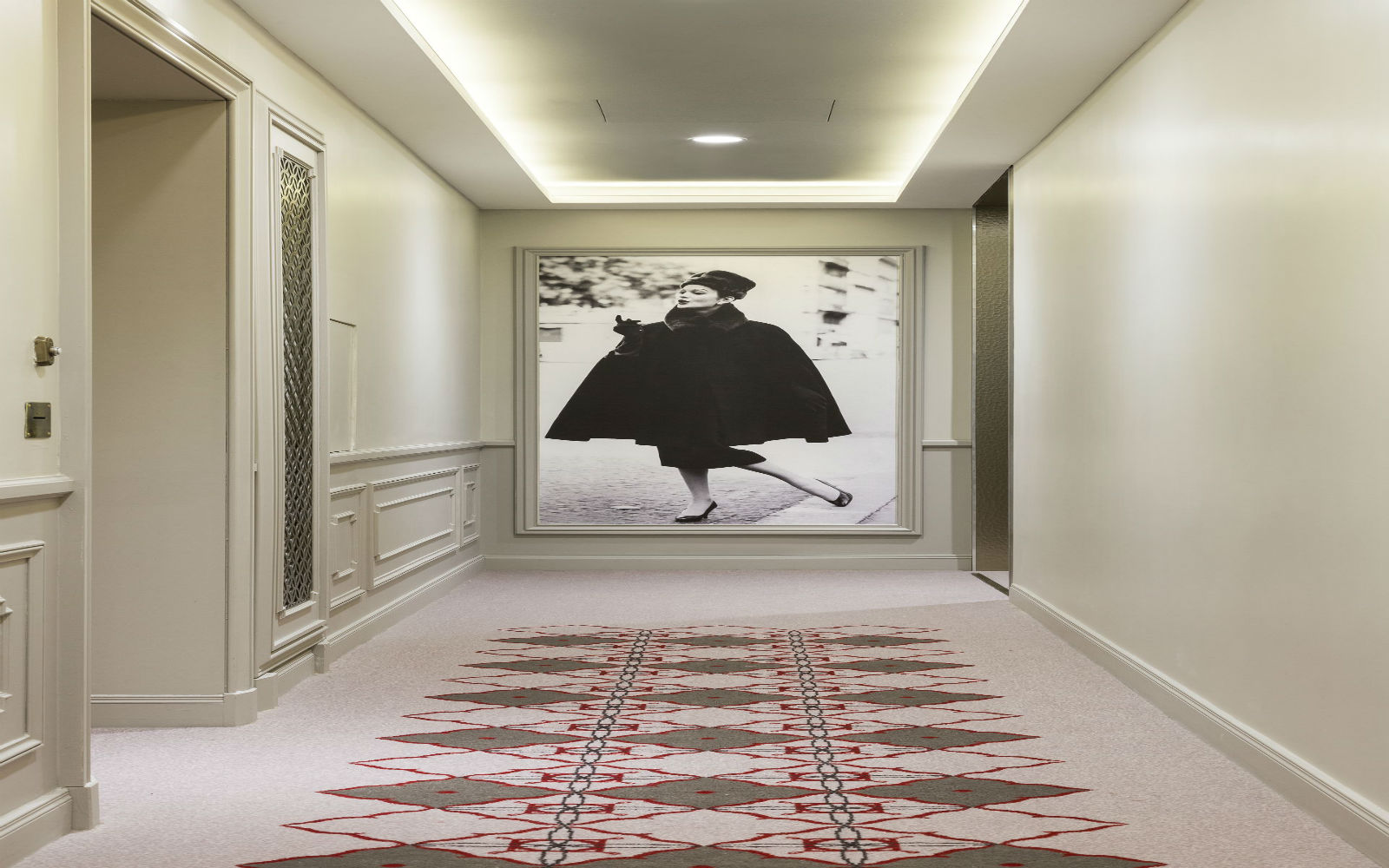 LA CLEF
TOUR
LA CLEF
TOUR
EIFFEL
PARIS
83 Avenue Kléber
+33 1 44 05 75 75
The
international Ascott chain has 17 hotels in
Paris, and I managed to stay at two of them. La Clef
Tour Eiffel Paris, in the
16th arrondissement, is a five-minute walk from the
Arc de Triomphe, and not
far from the Trocadero. It’s a fine neighborhood for
a stroll on the grand
boulevards in this older section of Paris. 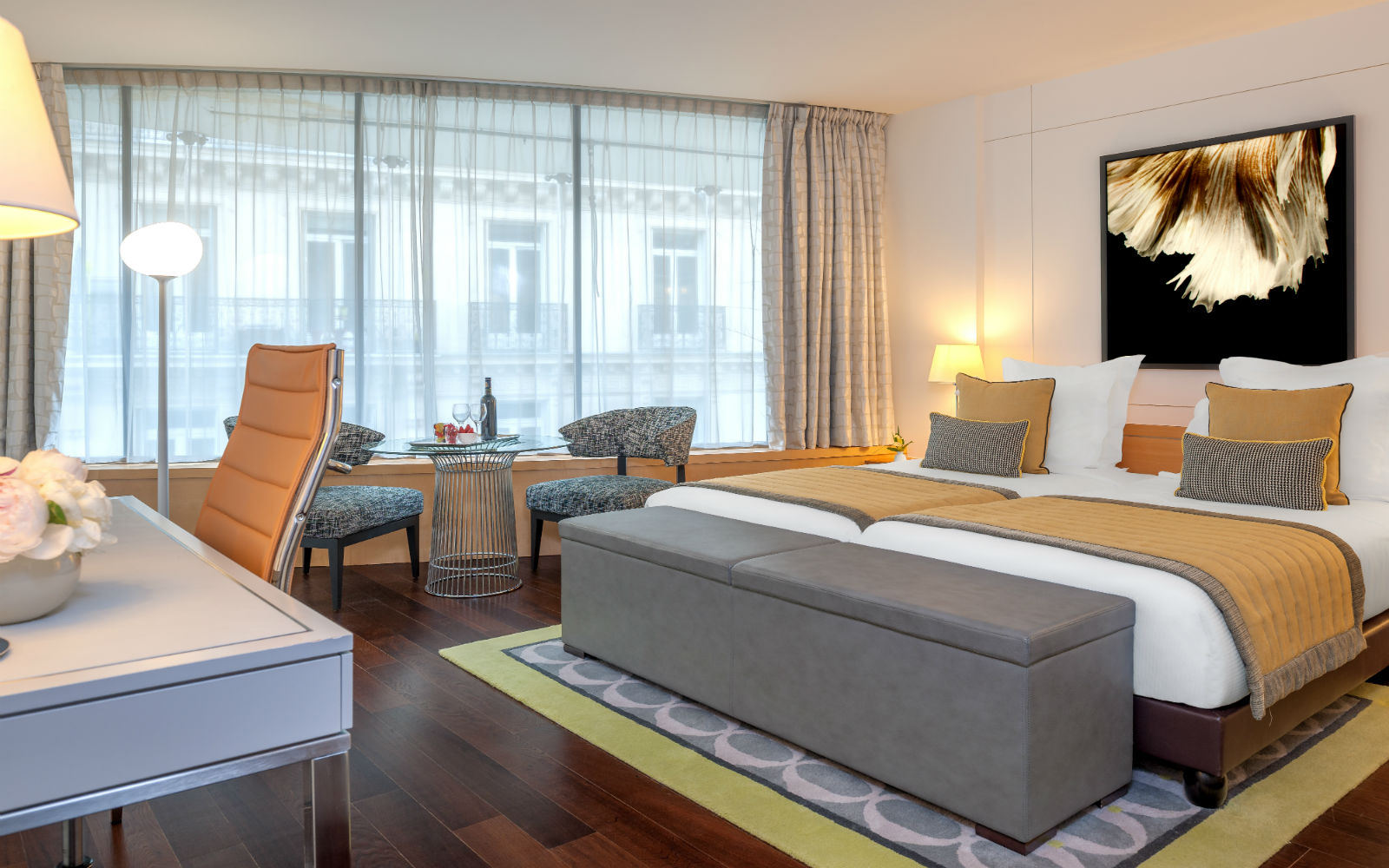
The hotel’s 19th century building conversion was designed by Spanish architect Ricardo Bofill, who’s done a score of projects in Paris. The rooms are called “apartments,” with both single and double rooms available, with the Eiffel Tower Suite able to host up to four travelers. A Superior Room can be configured for one double bed or two singles. Floor-to-ceiling windows and muted colors of gray, beige and taupe, with figured space rugs, spacious desk and swivel chairs make it ideal for a business stay. The hallways and elevator landings are brightly lighted, with wall-sized, vintage black-and-white fashion photos.
Upon entering, after being buzzed in as you would at an apartment building, you go to the left for reception. Farther on is the lounge and extensive breakfast buffet, whose variety of foods is replaced throughout the day. Wheelchairs are fully accessible.
There is a well-equipped gym and, for those staying on for a few days, launderette service, which can keep you from running up an exorbitant hotel cleaning bill.
At the moment there are Classic Rooms available at $210.
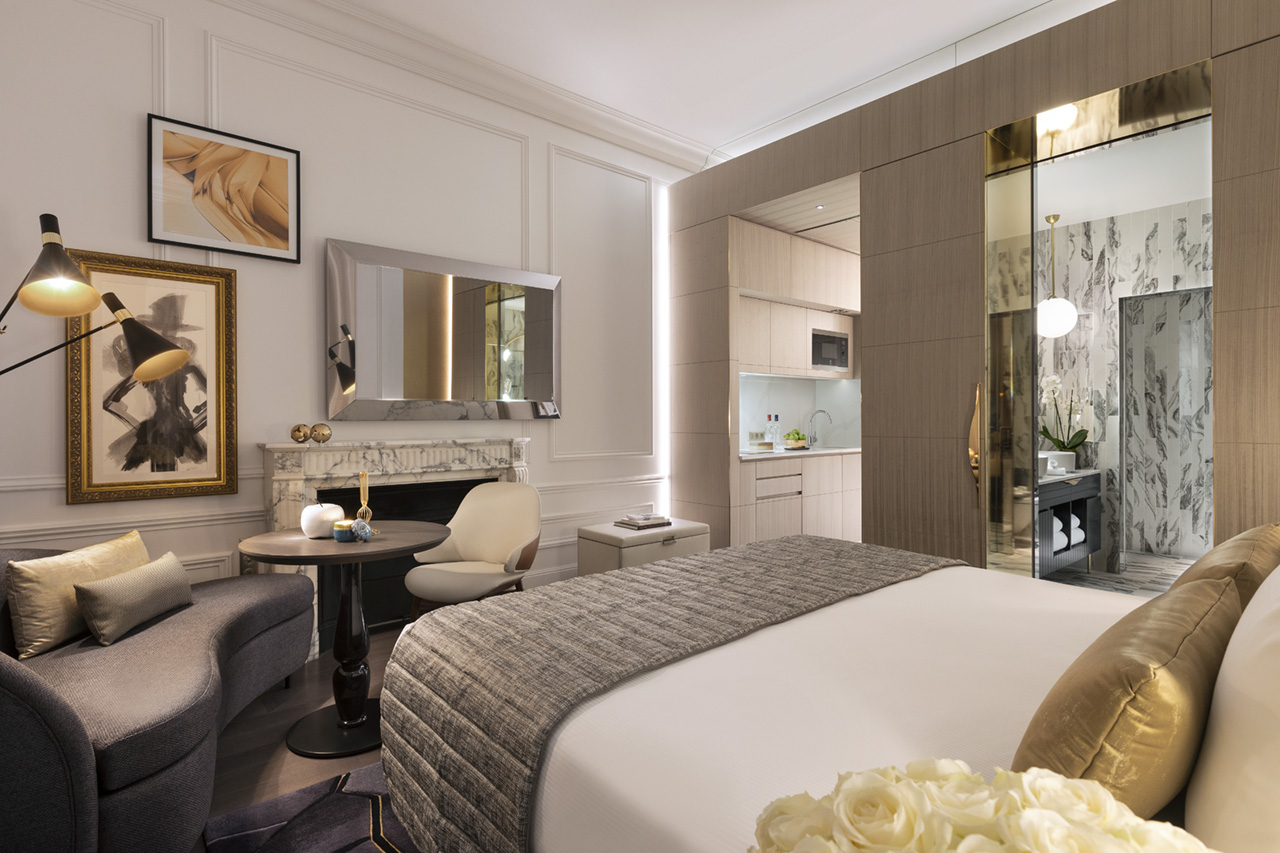 LA CLEF
CHAMPS-ÉLYSÉES PARIS
LA CLEF
CHAMPS-ÉLYSÉES PARIS
46 Rue de Bassano
+33 1 53 75 01 60
This
second Ascott hotel,
in their Crest Collection, is just blocks from the
La Clef Tour Eiffel Paris,
constructed out of a Belle Époque residence of the
Hennessy family.
It is done in a chic, sleek modern décor
of addictively soft surfaces and fabrics, impeccably
appointed marble bathrooms
with two sinks and L’Occitane en Provence amenities.
Some rooms have terraces
for breakfast or relaxing with a glass of Champagne,
overlooking the “Golden
Triangle” in view of the Eiffel Tower and Sacre
Coeur in the distance; some
have kitchenettes. It’s  a very
comfortable, happily quiet hotel, positioned
near Étoile, the boutiques on the Champs-Élysées and
close to any number of
restaurants and bistros.
a very
comfortable, happily quiet hotel, positioned
near Étoile, the boutiques on the Champs-Élysées and
close to any number of
restaurants and bistros.
The entrance hall is dazzling, clearly geared to attract a fashion crowd, with designer books displayed, Bertoia-like wire net chairs, marble floor, etched glass and a beautiful fin de siècle staircase.
This is a new property, and, while the service staff was entirely cordial, I found some lapses in providing basic information, and upon my arrival at 3:30 p.m., my room was still not ready. By the next morning, however, a manager personally apologized and said these faux-pas had been addressed.
The breakfast room is downstairs and being upgraded. Breakfast is 35 euros. Currently an executive room runs $318.
❖❖❖
By John Mariani
BRASSERIE 8 1/2
9 West 57th Street (near Fifth Avenue)
212-829-0812
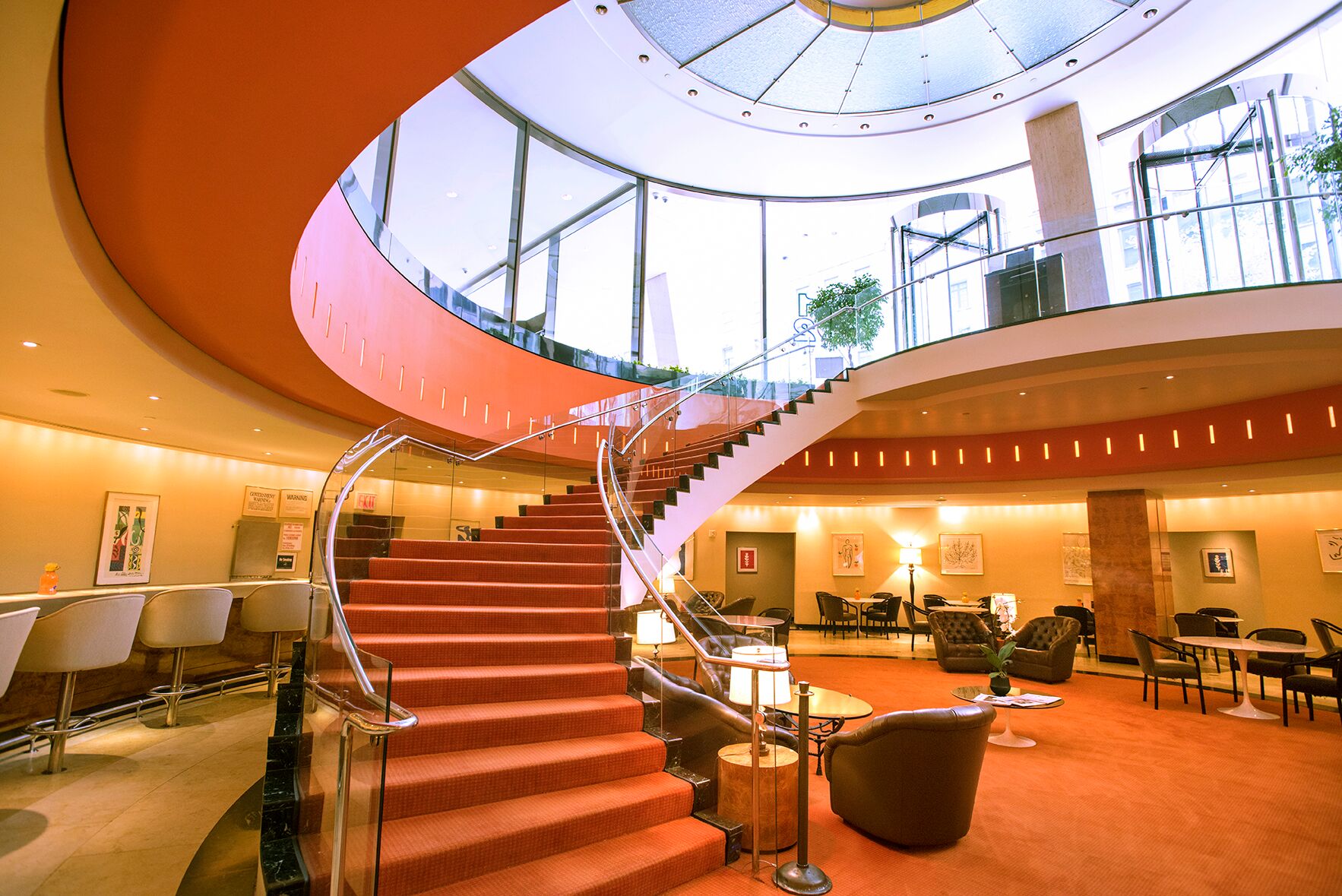
The construction of the sloping Solow skyscraper on 57th Street west of Fifth Avenue was the continuation of the breathtaking 1970s architecture in New York, which included the Citigroup Center and the World Trade Center’s Twin Towers. Developed by Sheldon Solow and designed by Gordon Bunshaft of Skidmore, Owings and Merrill, it looks like a 54-story ski jumping ramp, immediately identified from afar by the big red number nine sculpture by Ivan Chermayeff out front.
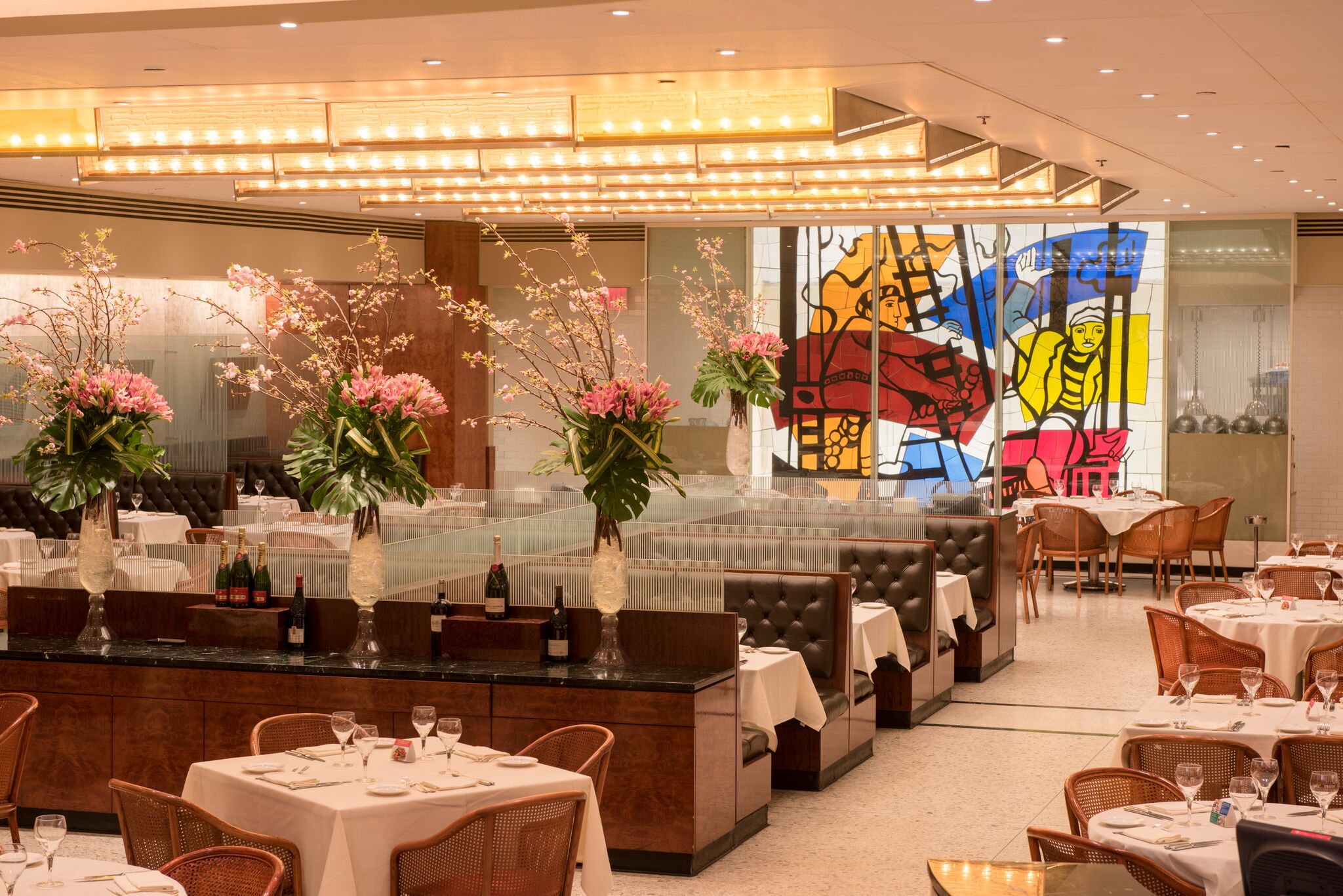 The revolving glass
doors to the restaurant
Brasserie 8 ½ open to an equally dramatic,
sweeping red-carpeted staircase fit
for any grand entrance, like the number in An
American in Paris when Georges Guétary
sings “I'll Build a Stairway to
Paradise.” Downstairs is a swank onyx bar, white
terrazzo floors, mirrored columns,
expansive flower displays, deep leather booths,
and a stained-glass mural by
Ferdnand Léger, along with other original
artwork by Matisse. Tables are well
set and well set apart, the booths of soft brown
leather exceptionally roomy
and the lighting soft. VP of Operations Ken
Gordon has been keeping regulars
and newcomers happy for a long time now.
The revolving glass
doors to the restaurant
Brasserie 8 ½ open to an equally dramatic,
sweeping red-carpeted staircase fit
for any grand entrance, like the number in An
American in Paris when Georges Guétary
sings “I'll Build a Stairway to
Paradise.” Downstairs is a swank onyx bar, white
terrazzo floors, mirrored columns,
expansive flower displays, deep leather booths,
and a stained-glass mural by
Ferdnand Léger, along with other original
artwork by Matisse. Tables are well
set and well set apart, the booths of soft brown
leather exceptionally roomy
and the lighting soft. VP of Operations Ken
Gordon has been keeping regulars
and newcomers happy for a long time now.
Price-wise, management aims to please: in addition to regular lunch and dinner menus, there is a fixed price lunch (two courses, $29); fixed price dinner (three courses $45); a very popular Sunday brunch ($36; for children under ten $18); an Oyster Bar Happy Hour and many upcoming holiday specials, including Thanksgiving ($69), Christmas Eve ($49) and Christmas Day ($69).
Since I last wrote about Brasserie 8 ½, a new executive chef has come aboard, Geoffrey Bruijneel, who is both maintaining and adding to the menu of French brasserie classics with new notions of his own this fall.
Brasserie 8 ½
has a justified reputation for its crab cakes
($19 as a
starter, $37 as a main course), with an
abundance of true jumbo 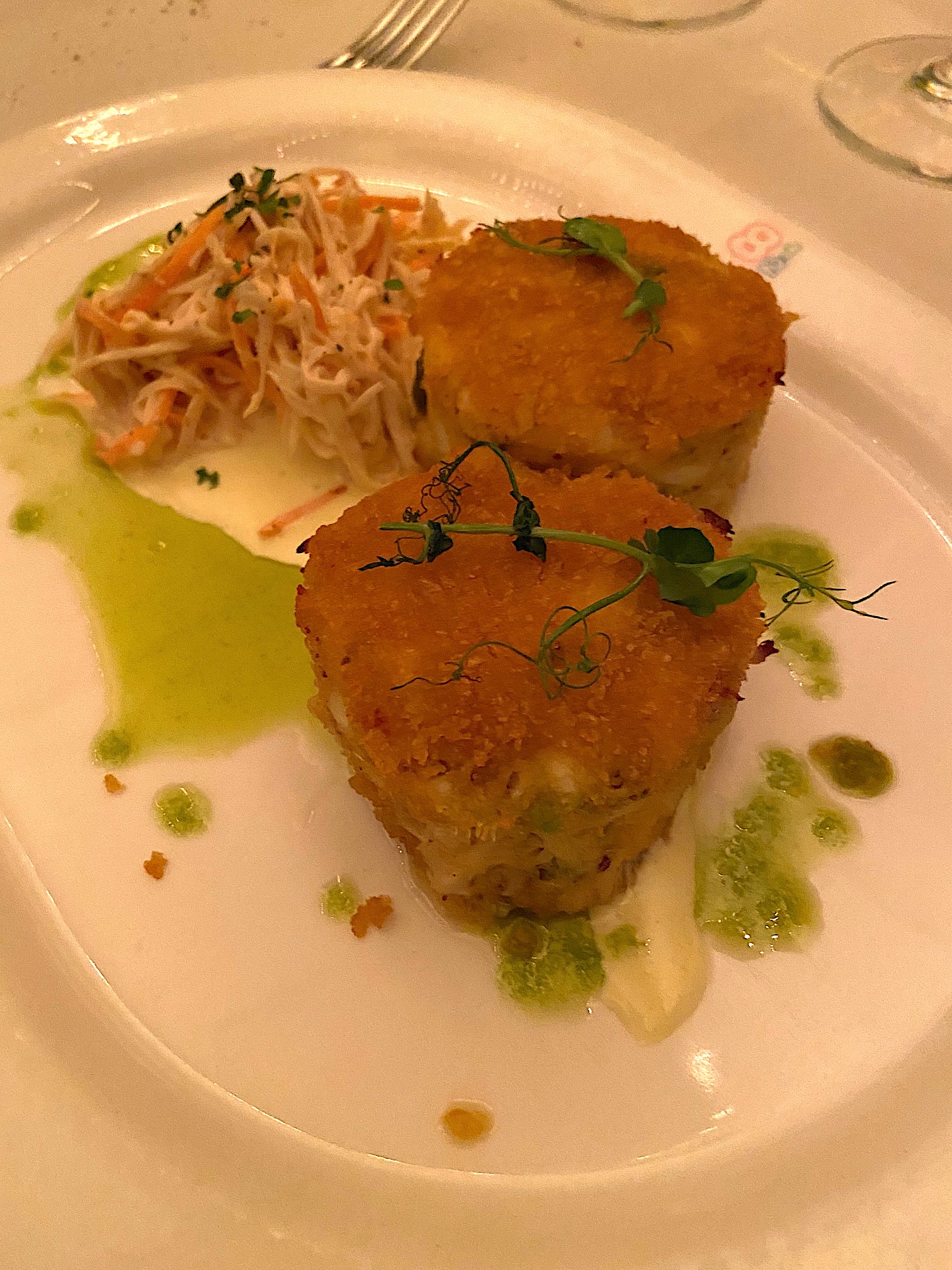 lump crab meat
in a light celery rémoulade with lemon aïoli (right).
He’s upgraded the yellowfin tuna
tartare ($18) with avocado, crispy farro and a
tangy soy-wasabi dressing. The
big crock of onion soupe
gratinée
($15) is easily one of the best in the city,
covered with bubbly Émmenthaler
and Gruyère cheeses beneath which is a sweet,
onion-rich broth the color of
coffee.
lump crab meat
in a light celery rémoulade with lemon aïoli (right).
He’s upgraded the yellowfin tuna
tartare ($18) with avocado, crispy farro and a
tangy soy-wasabi dressing. The
big crock of onion soupe
gratinée
($15) is easily one of the best in the city,
covered with bubbly Émmenthaler
and Gruyère cheeses beneath which is a sweet,
onion-rich broth the color of
coffee.
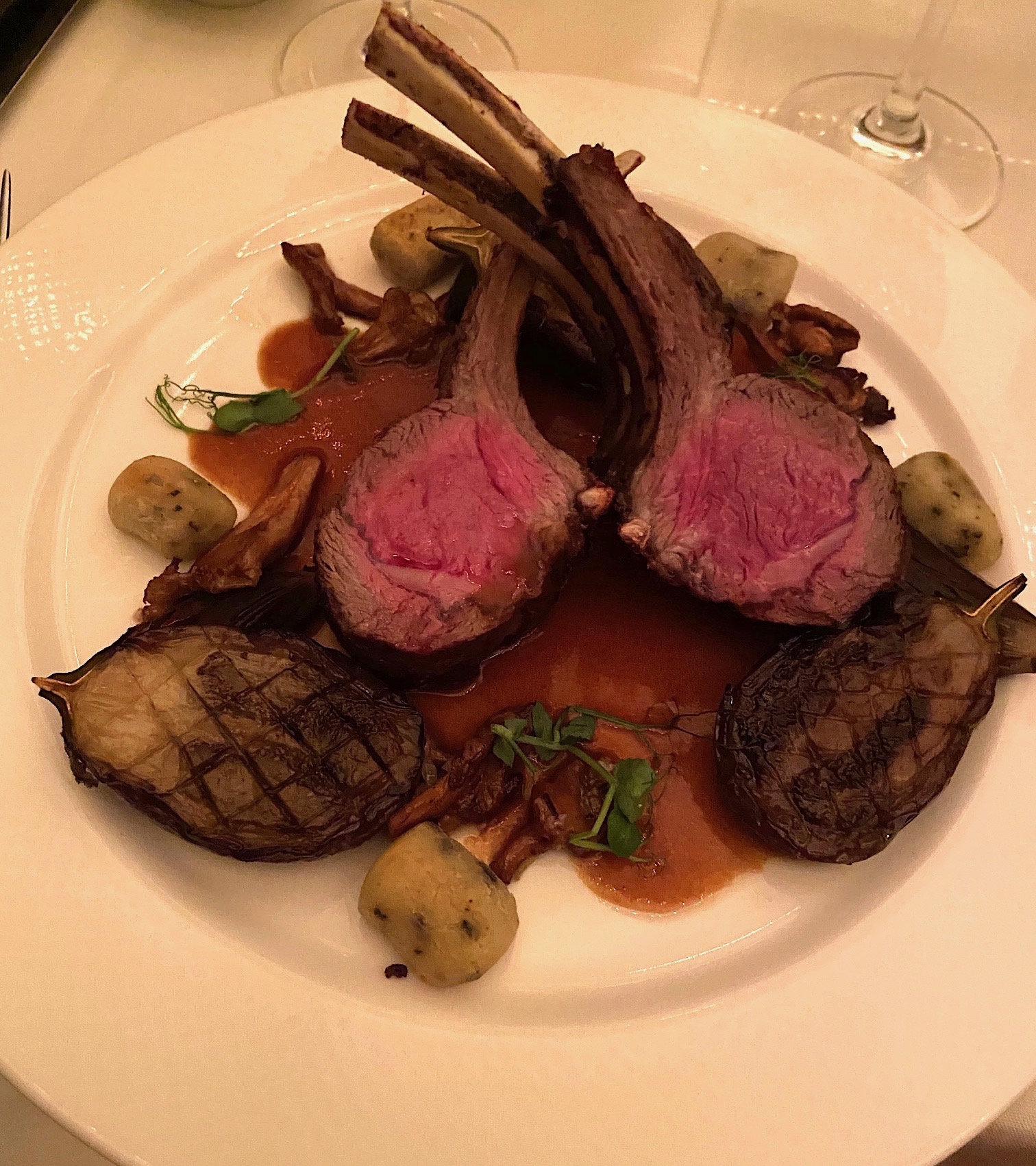 With the absurd
imposition of a ban on serving
foie gras in New York restaurants coming, you
still have time to enjoy the
delicacy here, seared with poached Bartlett pear
and a huckleberry and
pistachio Banyuls gastrique sauce
served
with brioche toast. The only real disappointment
among the appetizers
were the risottos I’ve tried: one with asparagus
and tomatoes and black truffle
essence ($18), whose texture was gummy, looking
more like guacamole than a rice
dish, and, during the current white truffle
season, one with four slices of
white truffles on rice in need of more
Parmigiano-Reggiano ($39).
With the absurd
imposition of a ban on serving
foie gras in New York restaurants coming, you
still have time to enjoy the
delicacy here, seared with poached Bartlett pear
and a huckleberry and
pistachio Banyuls gastrique sauce
served
with brioche toast. The only real disappointment
among the appetizers
were the risottos I’ve tried: one with asparagus
and tomatoes and black truffle
essence ($18), whose texture was gummy, looking
more like guacamole than a rice
dish, and, during the current white truffle
season, one with four slices of
white truffles on rice in need of more
Parmigiano-Reggiano ($39).
The main courses are all generously
proportioned, from the bowl of mussels in white
wine, garlic and thyme with
terrific frites
on the side ($25) to
plump, sweet, perfectly cooked sea scallops with
parsnip puree, romanesco and
lemon-caper butter sauce ($32). You get three
impeccably trimmed chops in a
rack of lamb with Fairy Tale eggplant,
chanterelles and Parisian gnocchi with
lamb jus
($40). The dry-aged beef is hefty
($47), nicely seared and comes with a
well-rendered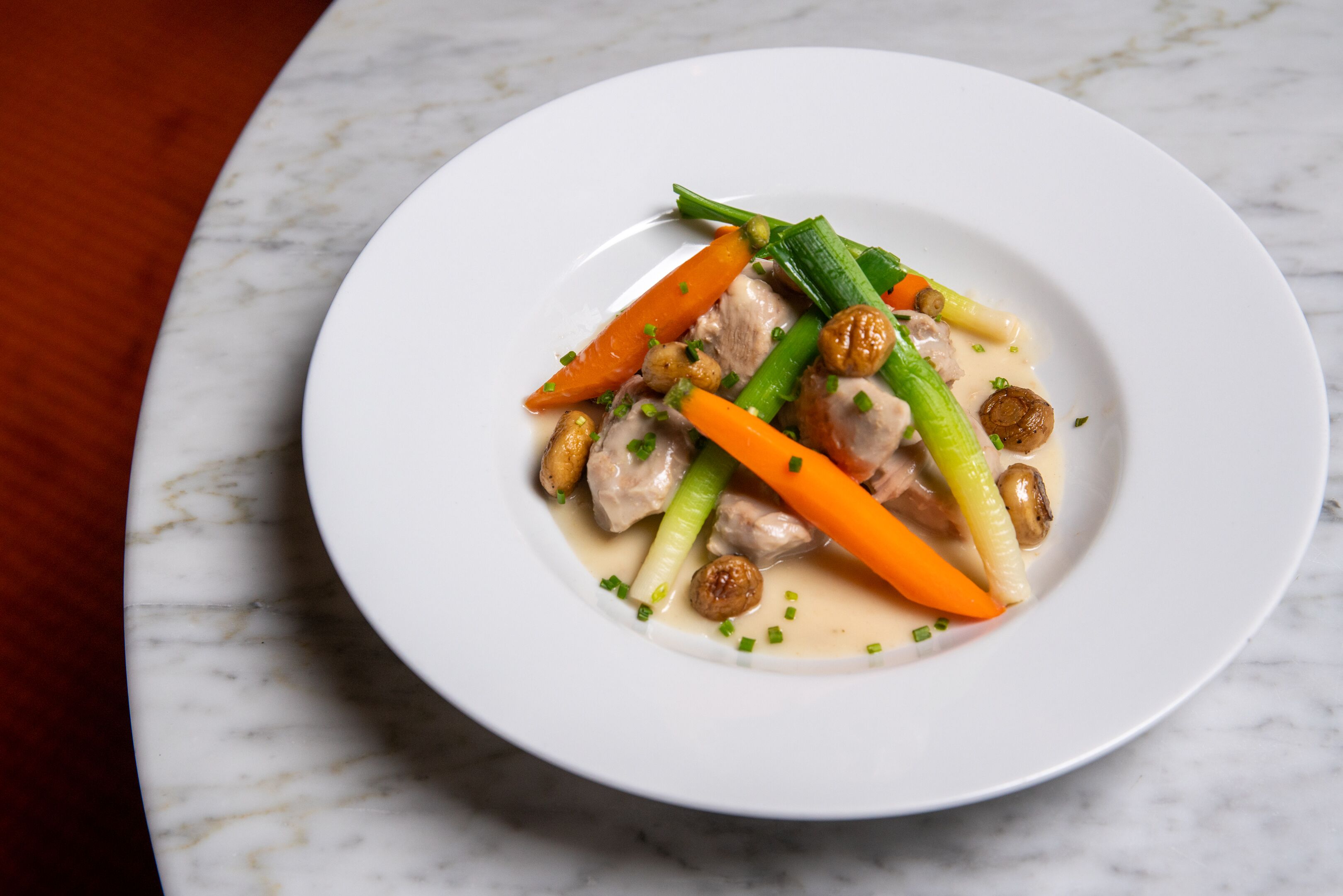 Béarnaise and more of those superb frites.
Béarnaise and more of those superb frites.
With a little skepticism—owed to a nostalgia for the first blanquette de veau I ever had, on my first day in Paris at the age of nineteen—I wondered if Bruijneel, who is Dutch, could make me happy with his version (right) . He did: the abundant morsels of veal came in a luscious cream sauce with button mushrooms, baby carrots and leeks and pappardelle pasta on the side ($37).
How welcome to have a cheese selection (three choices for $15), and pastry chef Jerome Charpentier delivers beloved classic desserts: a superb Tarte Tatin made with tangy-sweet Granny Smith apples and mascarpone ice cream ($9); classic crème brûlée ($9); piping hot beignets with three dipping sauces ($10); a crepe souffle with passiomn fruit sauce ($9); and a chocolate caramel tart with hazlenut-chocolate ice cream ($9).
The wine list could use bulking up, but there are many bottles under $60 and a good selection of 13 wines by the glass ($13-$16).
Brasserie 8 ½ might well have lasted all these years on the basis of its location within the Solow Building and for its stunning beauty. But year after year, without going off on any trend of the moment, it has maintained a clientele, both in and out of town, who come for consistently fine food and a very warm welcome. It is one of those spectacular but quietly sophisticated places anyone going to the Empire State Building, the Guggenheim Museum and the Statue of Liberty should add to their itinerary.
Open for lunch and dinner Sun.-Fri.; for dinner on Sat.
KEVIN BUCKLER IS A BIG WINNER
By John Mariani
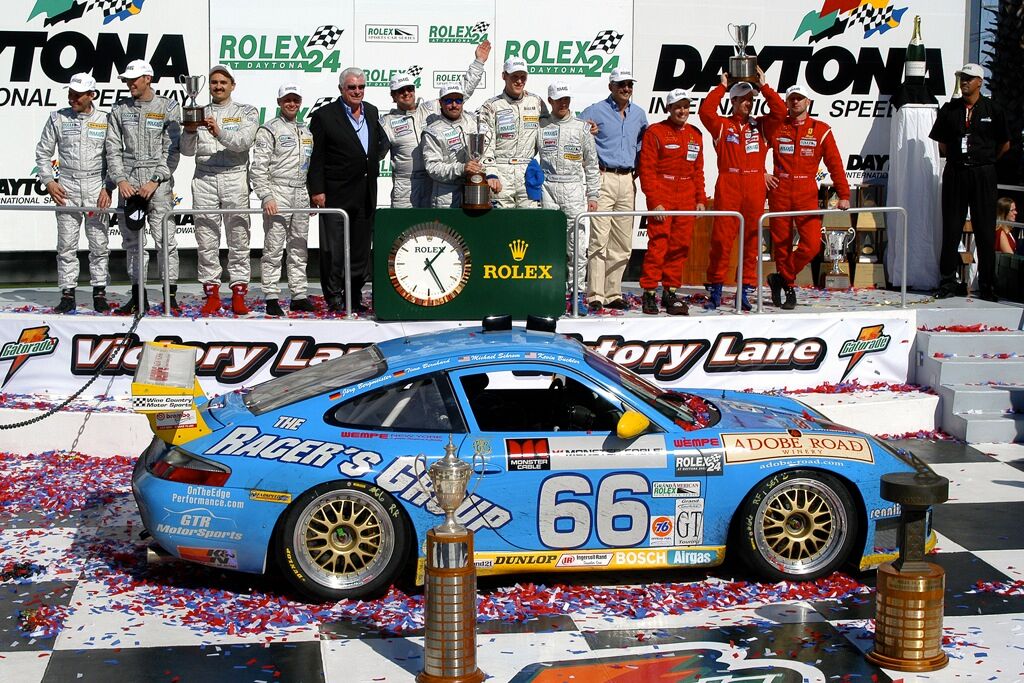
In contrast to the Old Money that owns, often for centuries, the wineries of France and Italy, the wineries of California are largely owned by mid-20th century individuals who had achieved affluence in a variety of ways, from investment banking, realty, law, medicine and, in the case of Francis Ford Coppola, the movie business. But as far as I know, the only one to come from the world of car racing is Kevin Buckler, CEO of The Racer’s Group and founder of Adobe Road Winery in Sonoma. His trophies and mementos are on display at the winery in Petaluma.
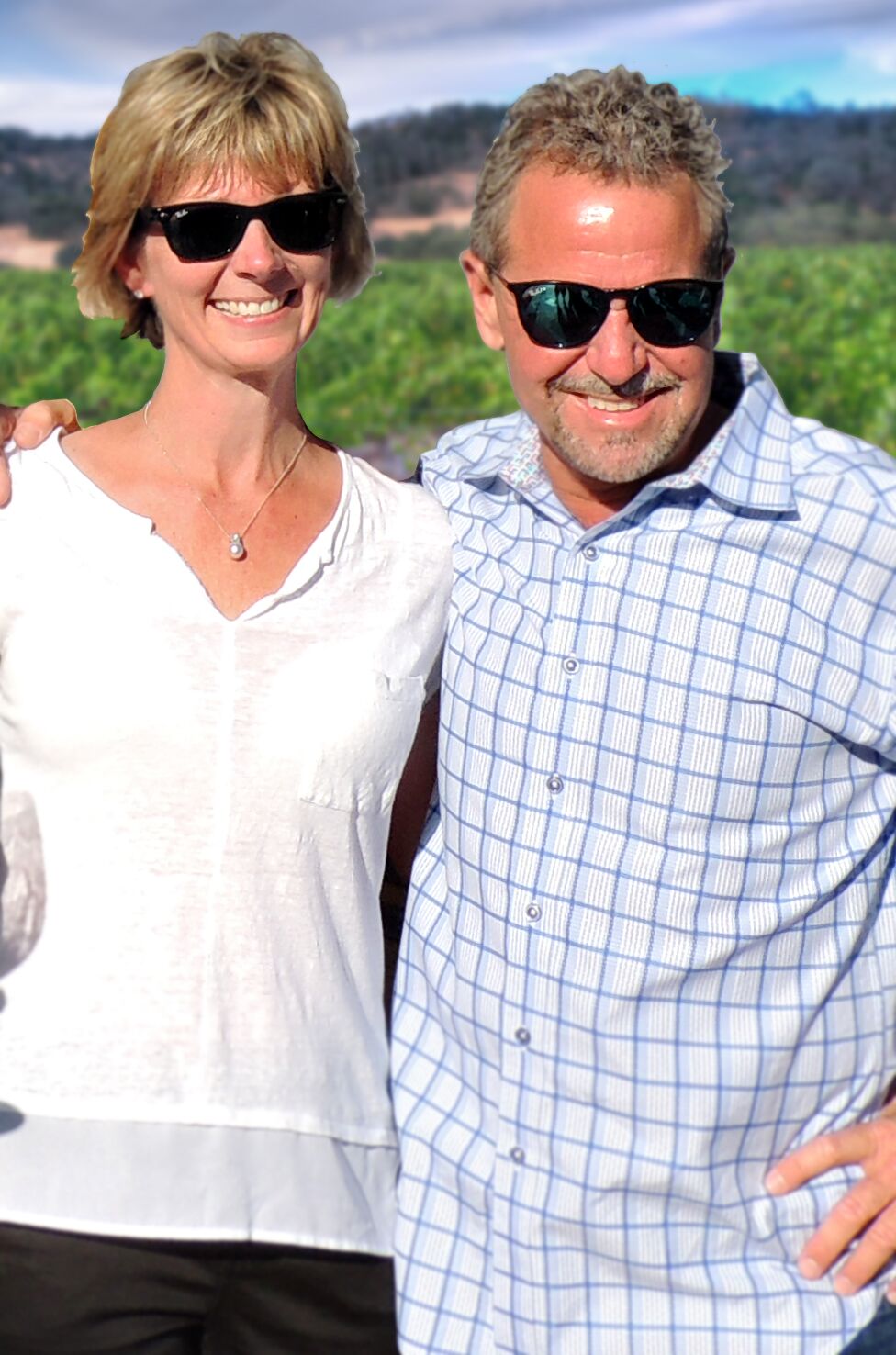 It would be easy enough to pun my
way through
his story of shifting gears and taking an off
ramp into making wine, but his
achievements in auto racing are well out of the
ordinary.
Buckler began his professional career
as a race driver in 1995 by winning the
California Grand Prix in his Porsche
911, going on to more than 100 victories over
three decades that included wins
at the 2002 24 Hours of Le Mans and four victories at the Rolex 24
Hours at Daytona.
It would be easy enough to pun my
way through
his story of shifting gears and taking an off
ramp into making wine, but his
achievements in auto racing are well out of the
ordinary.
Buckler began his professional career
as a race driver in 1995 by winning the
California Grand Prix in his Porsche
911, going on to more than 100 victories over
three decades that included wins
at the 2002 24 Hours of Le Mans and four victories at the Rolex 24
Hours at Daytona.
The same year he won at Le Mans, he and his wife, Debra (left), founded Adobe Road Winery, intending to make first-rate wines on a small scale, saying, “I want to be in the front ranks of California Cabernet Sauvignon makers. My winemaker Garrett Martin is a ninja, and we both want to be very innovative. And if it costs a little more, so be it.” As when he had his bottle labels’ glue special ordered from the 3M Company.
In person Buckler, 60, is a down-to-earth Californian. Though he was born in Coral Gables, Florida, he grew up in Newport Beach.
“What an amazing time growing up in a small beach town, around cool cars, lifestyle, food and wine,” he says, sounding like Sean Penn’s Jeff Spicoli surfer dude in “Fast Times at Ridgement High.” “I had a small blue 240Z, and when I was not playing tennis (I was a ranked Southern California player), we were basically terrorizing the neighborhoods, or finding ways to rip off our dad’s exotics and not get busted!”
After that lotus-eating period he took a job with Dean Witter in Seattle, “but I became disillusioned and eventually ended up working for the summer at a real estate development/timeshare-style resort. Eventually I bought my own small campground resort, expanded it to three and with investors became the second-biggest industry
 turnaround specialist
at the age of 29. Several years
later I received a buyout offer and gladly
accepted and moved back to
California in 1992 to chase my dreams of cars
and wine.” He still had a gnarly
streak after all.
turnaround specialist
at the age of 29. Several years
later I received a buyout offer and gladly
accepted and moved back to
California in 1992 to chase my dreams of cars
and wine.” He still had a gnarly
streak after all.
When I met Buckler for dinner at New York’s Gotham restaurant, he was wearing jeans and a wildly colored shirt with car imagery, his beard more or less trimmed. He’s wiry, a bit shorter than I expected, resembling a more likeable version of comedian Dennis Miller. He talks fast, uses his hands for emphasis but doesn’t use either West Coast slang or Winespeak clichés.
Although I could sense he was more interested in talking about wine, he very cordially answered my dull-witted questions about car racing, like “Were Paul Newman and Steve McQueen good race car drivers?” (They were, for amateurs.)
Buckler was as animated about racing as he was his winery, saying that he and his wife are proud of being the first winery in the downtown Petaluma area and becoming part of the city’s growing culture. Last month they broke ground at Adobe Road for a new riverfront, state-of-the-art winery and entertainment complex to open next fall with a tasting room with outdoor fire pits, outdoor pizza oven, a 120-person banquet facility, upstairs VIP area and party deck, a motorsports museum and more. As Petaluma Mayor Teresa Barrett said at the groundbreaking ceremony, “A wine tasting room and a race car showroom in your own town. Who else has that?”
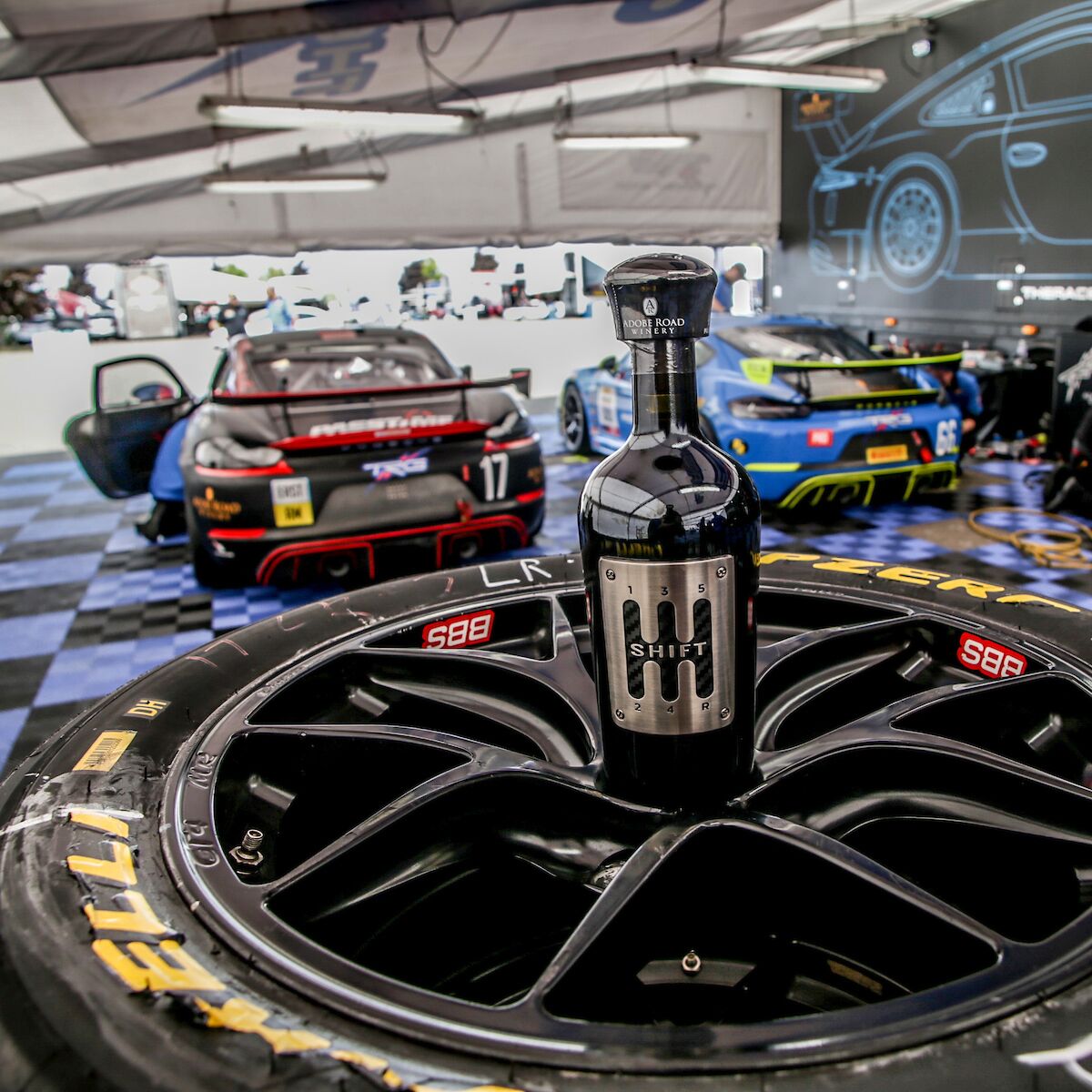 My
familiarity with Adobe Road’s wines was
expanded over dinner as we tasted our way
through several current releases. The
2017 Chardonnay ($49) was nice and peppery, very
lush, not oaky. The 2017 Pinot
Noir RR ($68) is one of those rare Sonoma Pinot
Noirs that actually tastes like
Pinot Noir instead of a syrupy, sweet bruiser of
a red wine. It has abundant
California sun in its fruit-forward style, but
the acids tame it all down so
that it is a complex Pinot as delicious in the
second or third glass as in the
first.
My
familiarity with Adobe Road’s wines was
expanded over dinner as we tasted our way
through several current releases. The
2017 Chardonnay ($49) was nice and peppery, very
lush, not oaky. The 2017 Pinot
Noir RR ($68) is one of those rare Sonoma Pinot
Noirs that actually tastes like
Pinot Noir instead of a syrupy, sweet bruiser of
a red wine. It has abundant
California sun in its fruit-forward style, but
the acids tame it all down so
that it is a complex Pinot as delicious in the
second or third glass as in the
first.
I thought the 2014 Cabernet Sauvignon Beckstoffer Vineyard Georges III ($155) was overripe, and its 15.5% alcohol did nothing to ameliorate the blast of fruit and tannin.
The 2016 Apex (now sold out) was far more appealing at 14.9% alcohol. I later tasted the 2018 ($78) and found it equally as delicious: a blend of 50% Cabernet Sauvignon from Dry Creek Valley, 23% Famighetti Vineyards' Syrah, 20% Cabernet Franc and “an inky drop” of 5% Petite Syrah and 2% Petit Verdot from Rockpile vineyard in far northern Sonoma County.
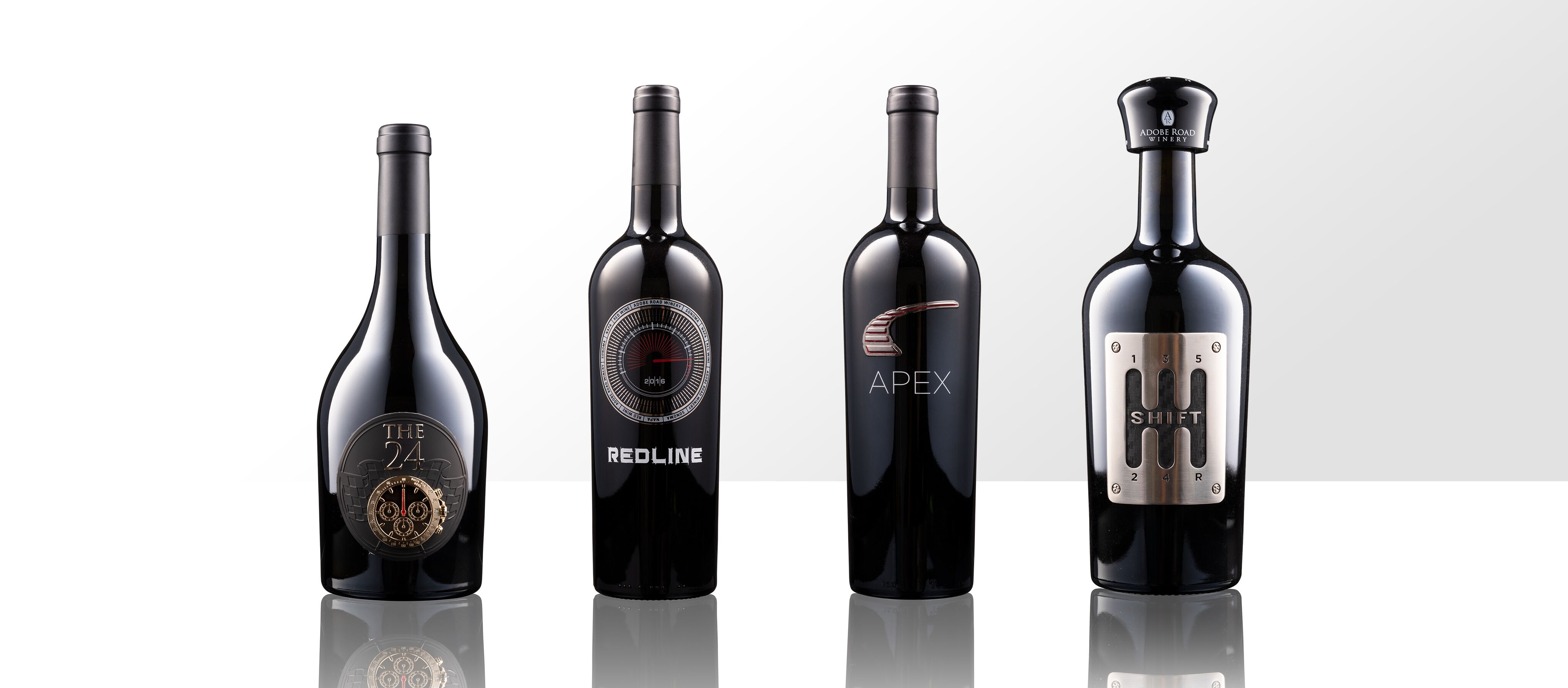
The 2016 Semillon Late Harvest ($65 for a half-bottle) was a ringer for a fine Sauternes or Barsac, full of honey sweetness moderated by a good backbone of acid.
This season Buckler is releasing a beautifully packaged gift box called The Racing Series, four wines emblazoned with a racing motif: APEX 2016 depicts the inner edge of a track curve; REDLINE 2016 represents the maximum engine speed before damage occurs; SHIFT 2016 shows off a distinctive metal shifter as its label; and ‘THE 24’ 2016 has the signature chronograph frame awarded to winners of 24- hour races like Daytona and Le Mans. All four Racing Series wines are California blends, ranging in price from $35 to $76, or available in the limited-production four- bottle gift box for $279.
By the end of the evening, after such good food and wines, I could see that Buckler’s enthusiasm and zeal for accomplishing excellence through innovation and a little dose of show biz had both succeeded and paid off. He’s a very happy, high-energy guy. I had only one last question: “Where can I get one of those shirts?”
❖❖❖

"Man Gets
Really Stoned After Drinking McDonald’s
Sweet Tea." In Hilton Head, SC, a man ordered his
tea with “extra lemon,”
which he now believes was code for marijuana, since
he found three bags of weed
in his cup.."--Huffington Post

THINK HOW MUCH THEY'D SAVE IF THEY GOT RID OF THEIR ACCOUNTANTS!
"A lot goes into all that planning, down to every single ingredient. American Airlines famously saved $40,000 a year in 1987 by getting rid of just one olive from their salads. According to Delta Airlines, 60 percent of the cost of each meal is because of the actual entrée, while appetizers make up 17 percent, salads 10 percent, and desserts account for 7 percent. Delta saved $250,000 a year by shaving just an ounce from their steaks, and similar to American, removed a single strawberry from their in-flight salads (served in first class on domestic routes) for savings of $210,000 a year."—Daily Meal 9/7/19
Any of John Mariani's books below may be ordered from amazon.com.
 The Hound in Heaven
(21st Century Lion Books) is a novella, and
for anyone who loves dogs, Christmas, romance,
inspiration, even the supernatural, I hope you'll find
this to be a treasured favorite. The story
concerns how, after a New England teacher, his wife and
their two daughters adopt a stray puppy found in their
barn in northern Maine, their lives seem full of promise.
But when tragedy strikes, their wonderful dog Lazarus and
the spirit of Christmas are the only things that may bring
his master back from the edge of despair.
The Hound in Heaven
(21st Century Lion Books) is a novella, and
for anyone who loves dogs, Christmas, romance,
inspiration, even the supernatural, I hope you'll find
this to be a treasured favorite. The story
concerns how, after a New England teacher, his wife and
their two daughters adopt a stray puppy found in their
barn in northern Maine, their lives seem full of promise.
But when tragedy strikes, their wonderful dog Lazarus and
the spirit of Christmas are the only things that may bring
his master back from the edge of despair. WATCH THE VIDEO!
“What a huge surprise turn this story took! I was completely stunned! I truly enjoyed this book and its message.” – Actress Ali MacGraw
“He had me at Page One. The amount of heart, human insight, soul searching, and deft literary strength that John Mariani pours into this airtight novella is vertigo-inducing. Perhaps ‘wow’ would be the best comment.” – James Dalessandro, author of Bohemian Heart and 1906.
“John Mariani’s Hound in Heaven starts with a well-painted portrayal of an American family, along with the requisite dog. A surprise event flips the action of the novel and captures us for a voyage leading to a hopeful and heart-warming message. A page turning, one sitting read, it’s the perfect antidote for the winter and promotion of holiday celebration.” – Ann Pearlman, author of The Christmas Cookie Club and A Gift for my Sister.
“John Mariani’s concise, achingly beautiful novella pulls a literary rabbit out of a hat – a mash-up of the cosmic and the intimate, the tragic and the heart-warming – a Christmas tale for all ages, and all faiths. Read it to your children, read it to yourself… but read it. Early and often. Highly recommended.” – Jay Bonansinga, New York Times bestselling author of Pinkerton’s War, The Sinking of The Eastland, and The Walking Dead: The Road To Woodbury.
“Amazing things happen when you open your heart to an animal. The Hound in Heaven delivers a powerful story of healing that is forged in the spiritual relationship between a man and his best friend. The book brings a message of hope that can enrich our images of family, love, and loss.” – Dr. Barbara Royal, author of The Royal Treatment.
 |
The Encyclopedia of American Food and Drink by John F. Mariani (Bloomsbury USA, $35) Modesty forbids me to praise my own new book, but let me proudly say that it is an extensive revision of the 4th edition that appeared more than a decade ago, before locavores, molecular cuisine, modernist cuisine, the Food Network and so much more, now included. Word origins have been completely updated, as have per capita consumption and production stats. Most important, for the first time since publication in the 1980s, the book includes more than 100 biographies of Americans who have changed the way we cook, eat and drink -- from Fannie Farmer and Julia Child to Robert Mondavi and Thomas Keller. "This book is amazing! It has entries for everything from `abalone' to `zwieback,' plus more than 500 recipes for classic American dishes and drinks."--Devra First, The Boston Globe. "Much needed in any kitchen library."--Bon Appetit. |
"Eating Italian will never be the same after reading John Mariani's entertaining and savory gastronomical history of the cuisine of Italy and how it won over appetites worldwide. . . . This book is such a tasteful narrative that it will literally make you hungry for Italian food and arouse your appetite for gastronomical history."--Don Oldenburg, USA Today. "Italian
restaurants--some good, some glitzy--far
outnumber their French rivals. Many of
these establishments are zestfully described
in How Italian Food Conquered the World, an
entertaining and fact-filled chronicle by
food-and-wine correspondent John F.
Mariani."--Aram Bakshian Jr., Wall Street
Journal.
"Equal parts
history, sociology, gastronomy, and just
plain fun, How Italian Food Conquered the
World tells the captivating and delicious
story of the (let's face it) everybody's
favorite cuisine with clarity, verve and
more than one surprise."--Colman Andrews,
editorial director of The Daily
Meal.com. "A fantastic and fascinating
read, covering everything from the influence
of Venice's spice trade to the impact of
Italian immigrants in America and the
evolution of alta cucina. This book will
serve as a terrific resource to anyone
interested in the real story of Italian
food."--Mary Ann Esposito, host of PBS-TV's
Ciao
Italia. "John Mariani has written the
definitive history of how Italians won their
way into our hearts, minds, and
stomachs. It's a story of pleasure over
pomp and taste over technique."--Danny Meyer,
owner of NYC restaurants Union Square
Cafe, The Modern, and Maialino.
|
 |
 |
 |
 |
 |
 |
 |
 |
 Everett Potter's Travel Report:
Everett Potter's Travel Report: 
 Eating Las Vegas
JOHN CURTAS has been covering the Las Vegas
food and restaurant scene since 1995. He is
the co-author of EATING LAS VEGAS – The 50
Essential Restaurants (as well as
the author of the Eating Las Vegas web site: www.eatinglasvegas.
He can also be seen every Friday morning as
the “resident foodie” for Wake Up With the
Wagners on KSNV TV (NBC) Channel 3 in
Las Vegas.
Eating Las Vegas
JOHN CURTAS has been covering the Las Vegas
food and restaurant scene since 1995. He is
the co-author of EATING LAS VEGAS – The 50
Essential Restaurants (as well as
the author of the Eating Las Vegas web site: www.eatinglasvegas.
He can also be seen every Friday morning as
the “resident foodie” for Wake Up With the
Wagners on KSNV TV (NBC) Channel 3 in
Las Vegas.
MARIANI'S VIRTUAL GOURMET
NEWSLETTER is published weekly. Publisher: John Mariani. Editor: Walter Bagley. Contributing Writers: Christopher Mariani,
Robert Mariani, Misha Mariani, John A. Curtas, Gerry Dawes, Geoff Kalish,
and Brian Freedman. Contributing
Photographer: Galina Dargery. Technical
Advisor: Gerry
McLoughlin.
If you wish to subscribe to this
newsletter, please click here: http://www.johnmariani.com/subscribe/index.html
© copyright John Mariani 2019

